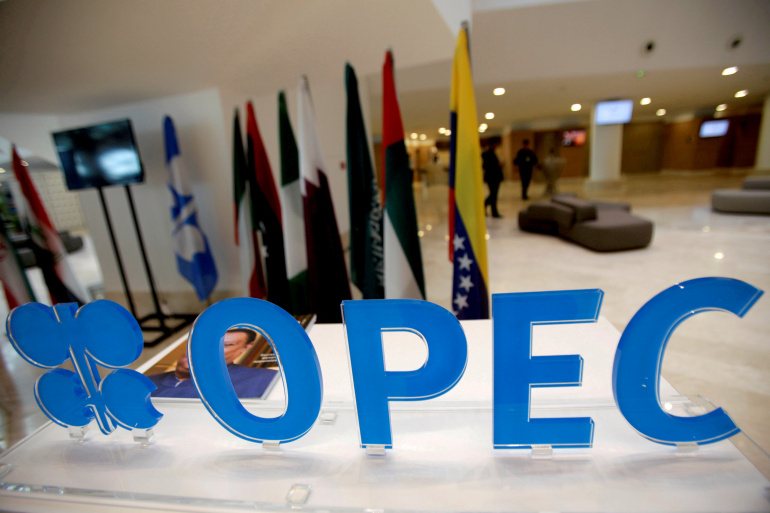
Black Friday’s price collapse shook the oil market, destroying the bullish sentiment that had been building throughout the month.
While prices partially recovered on Monday, they plunged again on Tuesday morning as uncertainty intensified. Concerns over the rapid spread of the Omicron variant have bolstered fears of demand destruction.
Everyone is now focused on the upcoming OPEC+ meeting as the potential loss of 2-3 million b/d of global demand could convince the cartel to halt its 400,000 b/d monthly production additions.
Saudi Arabia Shrugs Off Omicron Fears. Whilst other Middle Eastern countries were hesitant to assess OPEC+ prospects of incremental supply, Saudi Arabia’s energy minister Prince Abdulaziz bin Salman and Russia’s energy minister Alexander Novak were inclined to keep the oil group on its pre-charted course.
Jet Fuel Demand Poised to Suffer. Demand for jet fuel, by far the largest laggard in terms of post-pandemic recovery, is now under severe pressure as Omicron fears continue triggering border closures. Originally, it was expected to have a robust Q4, but these new developments could ruin that.
IEA Picks a Fight with Fossil Energy Producers. Fossil fuel energy producers are apparently to blame for high natural gas and power prices in Europe, according to the head of the International Energy Agency Fatih Birol. The comment was in response to the heavy criticism that clean energy initiatives received when prices spiked.
Russia’s Latest LNG Project Secures Financing. Arctic LNG-2, Russia’s next LNG megaproject developed by Novatek (MCX:NVTK), secured $10.7 billion in project financing from Chinese, Japanese, and Russian banks, thus failing to attract any European banking interest.
White House Seeks US Royalty Rate Revamp. In a recently published blueprint for the future development of oil and gas projects on federal lands, the Biden Administration is advocating an increase in royalty rates, currently some 12.5% on onshore leases and 12.5-18.75% on offshore leases.
Coal Prices Plummet on News of Further Chinese Intervention. China’s thermal coal futures as traded on the Zhengzhou exchange dropped 6% on Monday after the country’s economic planner NDRC indicated its willingness to “improve the mechanisms of coal pricing”, suggesting more government intervention might be on its way.
Iran Wants to Increase Production Capacity to 4 Million b/d. With the Vienna talks on Iran’s nuclear program restarting this week after a five-month hiatus, Iran’s national oil company NIOC is readying to return to a production capacity of 4 million b/d by March 2022.
Canada Vetoes Enbridge Pipeline Allocation. Canada’s Energy regulator rejected Enbridge’s (TSE:ENB) plan to sell all pipeline space on its 3mbpd Mainline trunk pipe system under long-term contracts, arguing the proposed allocation would excessively favor those with contracts.
Saudi Arabia Splashes the Cash for Shale Gas. Saudi Aramco (TADAWUL:2222) started work on the country’s largest non-oil-associated gas field Jafurah this week, with development costs assumed to be at 24 billion, aiming to produce 2 BCf per day of natural gas and some 400MCf per day of associated ethane by 2030.
Russia Wants to Expand Strategic Partnership with China into Green Energy. Having dedicated oil and gas pipelines to supplying China’s consumption centers, leading Russian energy officials are now calling to extend the strategic partnership into renewables, most probably in the form of wind energy projects.
Lundin Energy Considering a Sale or Merger. Sweden’s Lundin Energy (STO:LUNE), whose operations’ scope increased manifold thanks to its stake in the giant Johan Sverdrup field, is considering strategic alternatives that could include a merger or outright sale.
Shell Plans Libya Return. UK-based energy major Shell (NYSE:RDS.A) is planning to return to Libya following its 2012 departure, eyeing oil and gas projects in the Sirte and Ghadames basins, as well as solar plants there.
Indonesia Offers 8 New Oil and Gas Blocks in New Round. The licensing round since the start of the pandemic, Indonesia is now offering 8 new oil and gas blocks located across the archipelago for licensing bids, stating the blocks had a total capacity of 500 MMbbls of oil and 22 TCf of gas.
Oilprice.com


